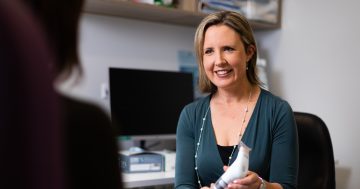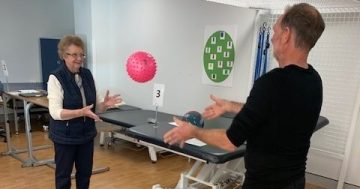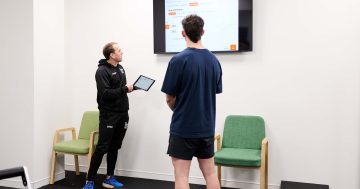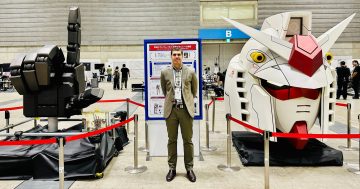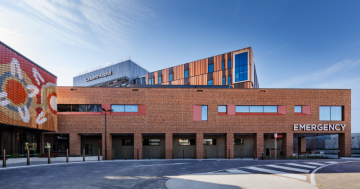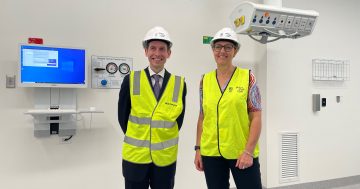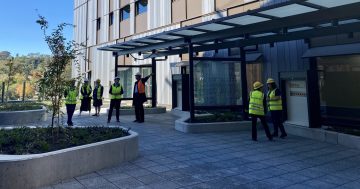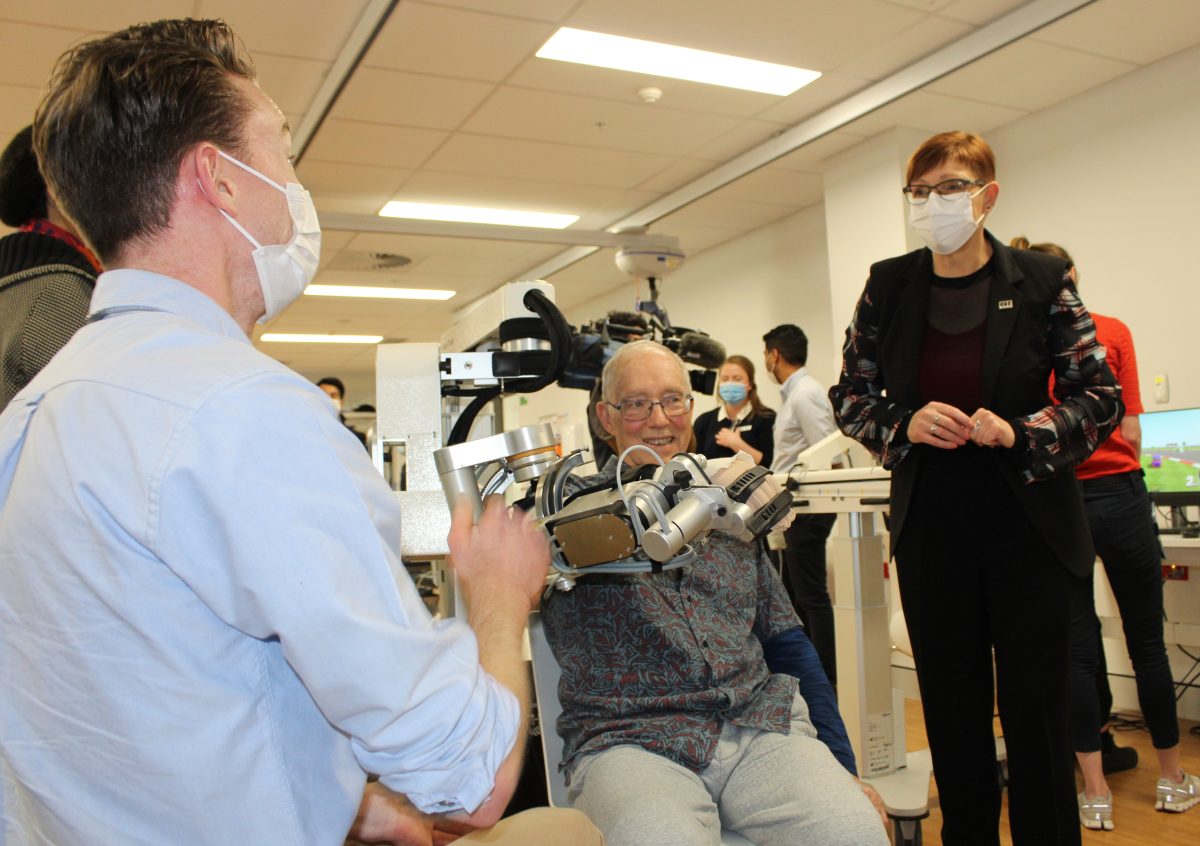
Upper and lower limb rehabilitative robots are now helping patients recover at the University of Canberra Hospital. Photo: Supplied.
Rehabilitation robots have been installed at the University of Canberra Hospital to help people in their recovery journey following serious neurological injuries.
It’s the second public facility in the country to offer the service, carried out by a trio of upper and lower limb rehab robotic devices.
University of Canberra Professor Bernie Bissett said the idea to bring cutting-edge rehabilitative technology to Canberra was first envisioned in 2020.
It’s taken collaboration between the university, the ACT Government and the Canberra Hospital Foundation to make it a reality.
The government pitched in $880,000 while the CHF contributed more than $345,000 through donations and contributions from partners to purchase the machines.
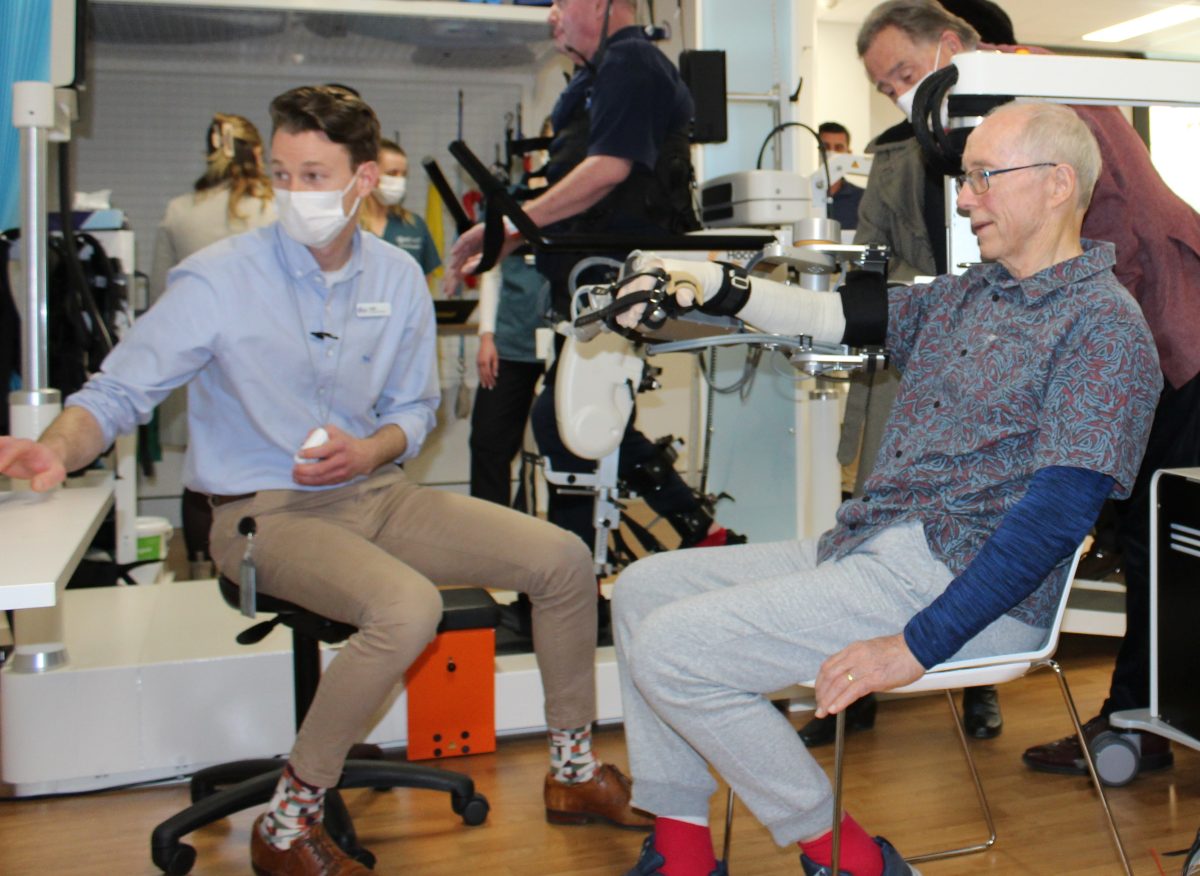
Anthony (AJ) Rheinberger (right) trying out the new robotic rehabilitation service at the University of Canberra Hospital. Photo: Supplied.
Prof Bissett said the robots won’t replace physiotherapists and occupational therapists, but instead enhance the rehabilitative care they’re able to provide by wrapping around the arm or leg of a patient to help facilitate movement.
“When I was trained as a physio, many years ago, we would need to physically do that with our hands and it was very time consuming and labour intensive,” she said.
“Instead of two or three physios or OTs having to help one patient, perhaps the machine and one [other] person can do it.
“Hopefully that’s going to translate into more opportunities for more patients to get more hours spent doing their rehab and hopefully accelerate their recovery.”
It’s not just the patients who will benefit.
Students studying occupational therapy and physiotherapy at UC will learn about robotics as part of their coursework and be involved in ongoing research.
The university’s current Honours students will also be interviewing clinicians and patients about their experiences using these robots to help improve treatment and build on research.
“By embedding elements of robotics rehabilitation into the university’s relevant course curricula, our students will be exposed to this innovative technology that will enhance their learning outcomes and career opportunities in the health workforce of the future,” UC Faculty of Health executive dean Professor Stuart Semple said.
It’s hoped that by involving academics and researchers in the clinical process, the ACT will then be able to pioneer other uses for the technology and be at the forefront of new research.
Health Minister Rachel Stephen-Smith said having access to the state-of-the-art robotic equipment was an important part of providing the health infrastructure the Territory needed as it continued to grow.
“Robotics is an exciting additional tool we can now use for treating patients and helping them improve function after serious neurological injuries, including stroke,” she said.
“The use of robotics in rehabilitation is still reasonably new, so we are working in partnership with the University of Canberra through research projects to build on the body of knowledge on the most effective use of robotics in rehabilitation.”
It’s hoped this will also attract more researchers and healthcare workers to the ACT.












